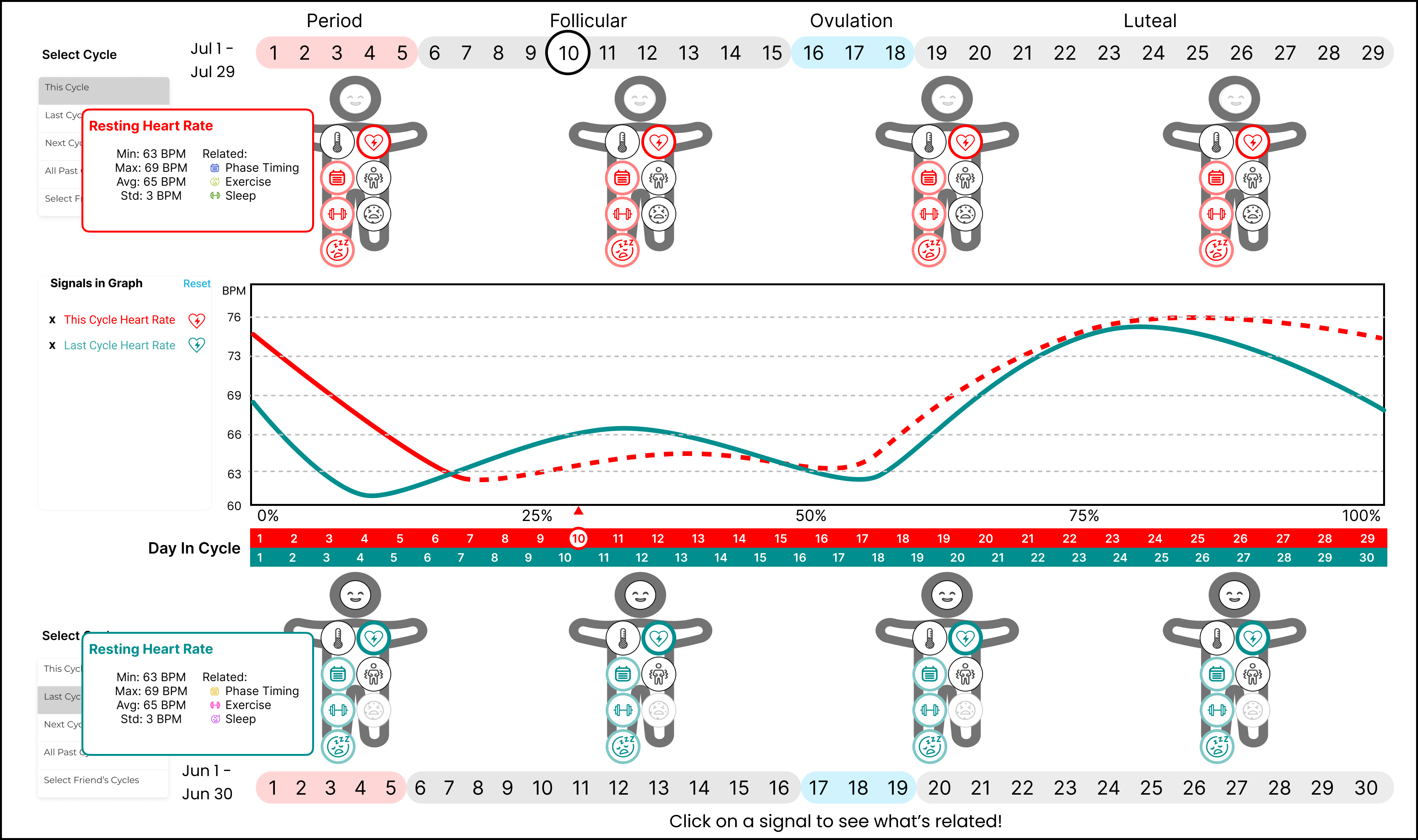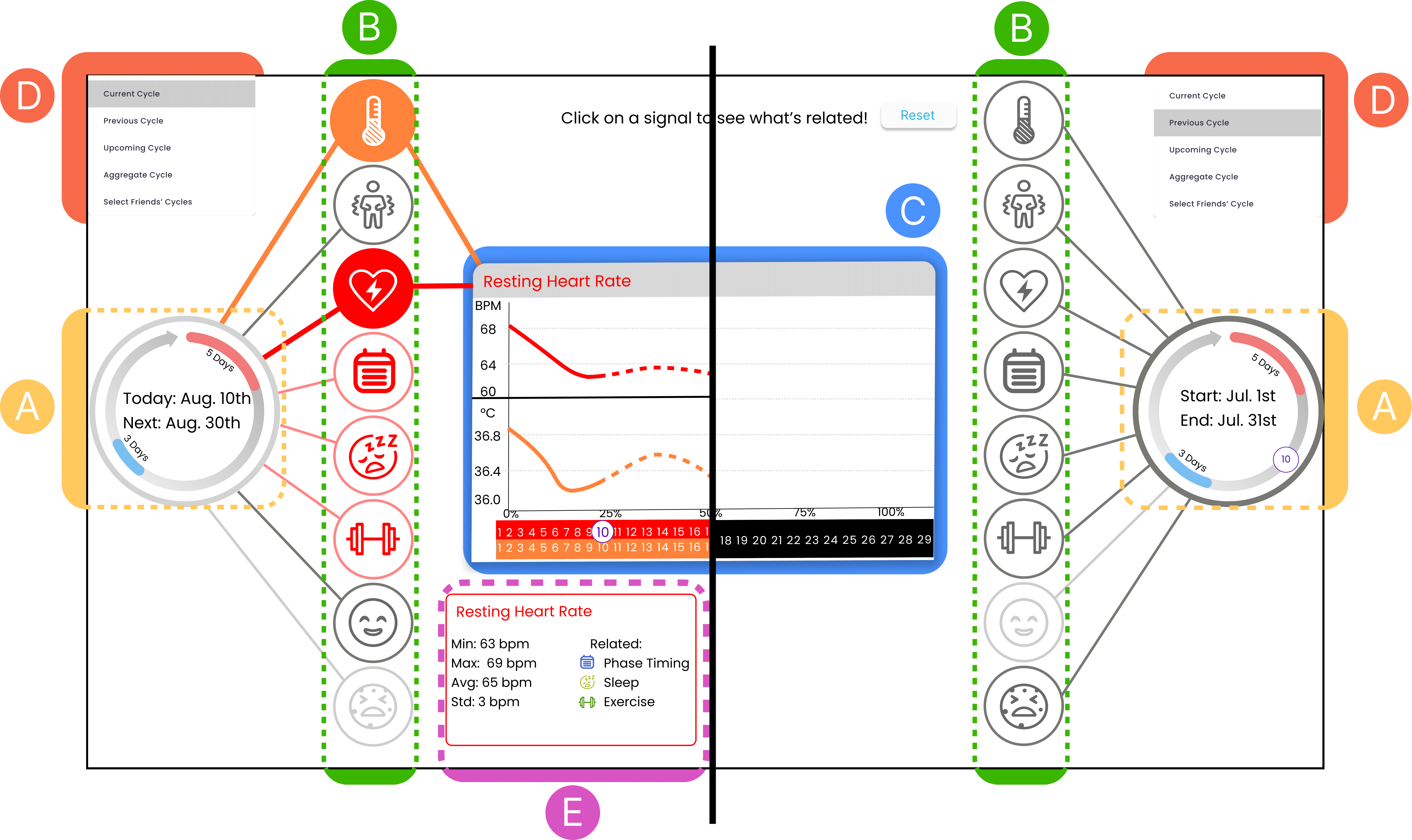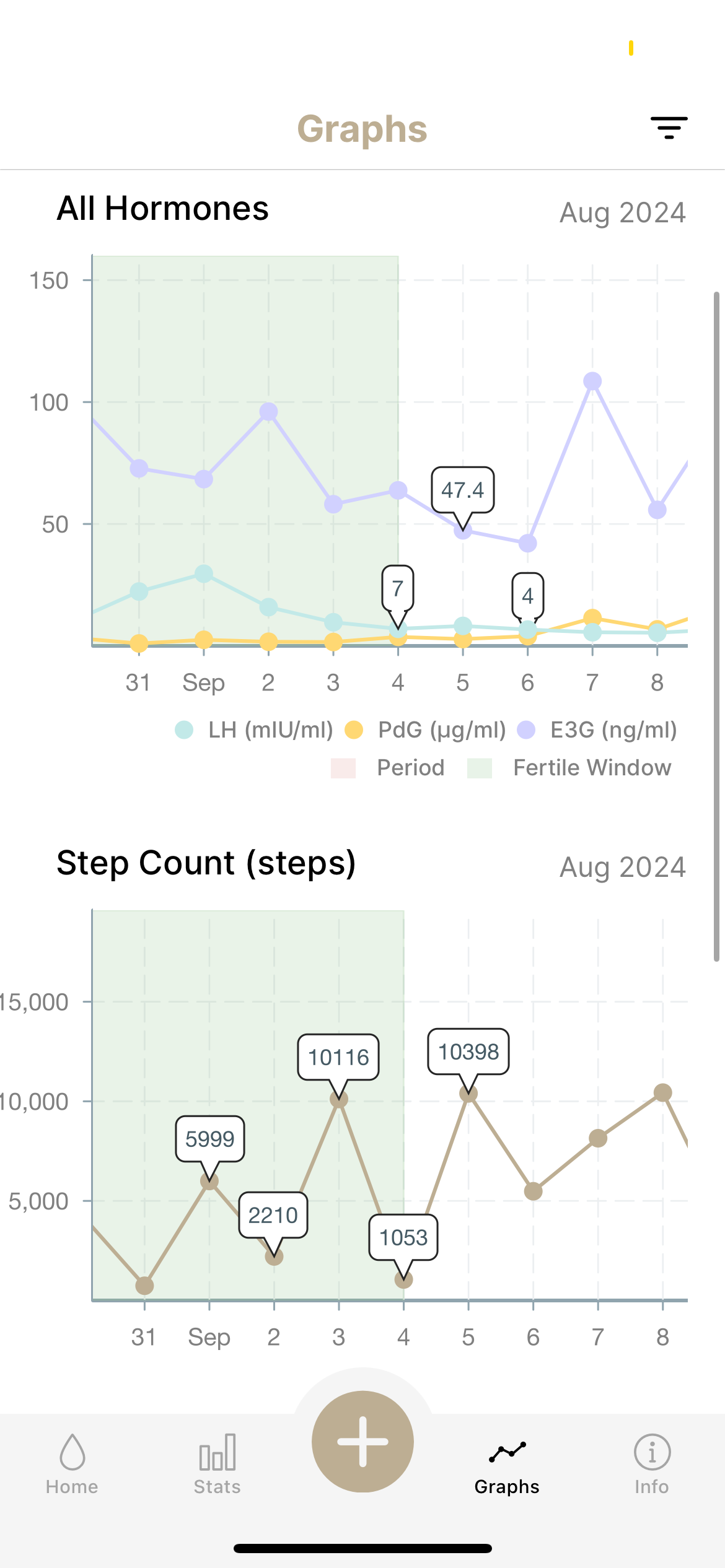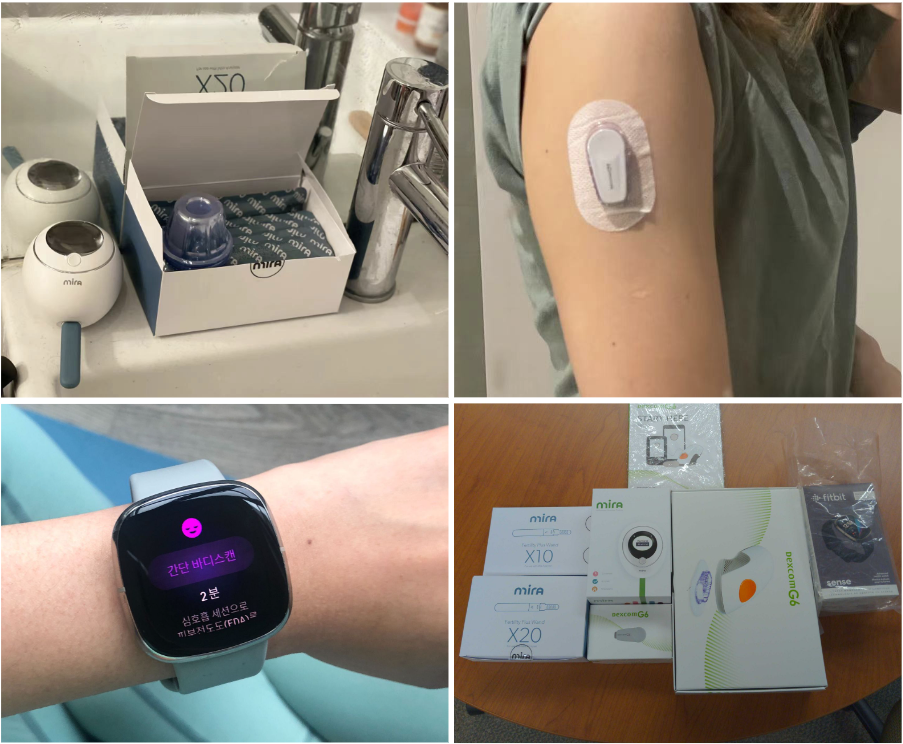Multimodal Health Sensing
Designing systems to support people in reconciling complex multimodal health data with their mental models
Connecting the Dots in Health Data
Most health apps treat the body as a set of disconnected parts. But health is interconnected and people want tools that help them understand how signals like sleep, mood, hormones, and energy relate over time.
This three-phase research and design project used menstrual tracking as a lens to explore how consumer health tools can better support holistic, goal-driven reflection.
Current Prototype Demo Video
The Problem
People want to understand their health, not just track it.
Many people turn to health tracking tools in the hopes of understanding their bodies and achieving personal health goals. Yet most apps treat health as fragmented focusing narrowly on one domain at a time, like exercise, diet, or hormones.
Health doesn't happen in silos
This siloed design makes it hard for users to grasp the bigger picture, even though health reflects a complex interplay of hormonal, metabolic, emotional, and behavioral factors.
Current tools oversimplify complexity
Today's tools reduce that complexity to calendar dots and symptom logs leaving users to make sense of patterns on their own.
What I Did
End-to-End Research
Led UX research, design, app development, deployment, and evaluation across 3 project phases
Multimodal Data Study
Studied how users track health signals with wearables (Fitbit, Dexcom, Mira)
Interface Design
Designed and tested new interfaces to support exploration, comparison, and pattern recognition
Prototype Evaluation
Evaluated a custom prototype over 100 days to assess impact on health understanding
Choosing Menstrual Health as a Focus Domain
Menstrual cycles are complex, cyclical, and deeply personal making them a powerful lens for studying health sensemaking. Most period apps focus on predicting dates or logging symptoms but fail to help users draw connections between hormones and overall health.
Varied User Goals
- Avoiding or achieving pregnancy
- Preparing for days of menstruation
- Managing symptoms such as chronic pain, mood changes, or fatigue
- Determine health status and diagnosing hormone conditions
- Learning how hormonal shifts impact wellbeing such as energy, sleep, stress, or focus
- Increase body and health awareness
Research Advantages
Cyclical, semi-perdictable fluctuations provide checkpoints to observe tracking behaviors
Goals can vary dramatatically overtime within and between individuals
Spans puberty, adulthood, pregnancy, postpartum, perimenopause, menopause
The Project
I established and led a design initiative across three phases:
Reflection
This research demonstrates the potential of multimodal tracking technologies to foster more comprehensive understanding of health. I identified new opportunities for designing personalized, adaptive tools that help individuals:






